
Customer SUCCESS STORY
Optimizing the Curing of Composites by Means of Differential Scanning Calorimetry and Kinetics Neo Software
A Field Report on How to Optimize the Manufacturing Process of a Carbon Bike Rim
Blacks S.r.l., an Italian company based in Faenza (Carbon Valley of Region Emilia Romagna, Central Italy), is specialized in the design, prototype and manufacturing of advanced composite material components such as carbon, glass, aramid fibers and hybrid fabrics through hand lay-up and autoclave curing. The following, we sum up a success story related to the optimization of an autoclave curing cycle by means of DSC data and kinetics analysis. This project brought together the expertise of both Blacks R&D and NETZSCH application support.
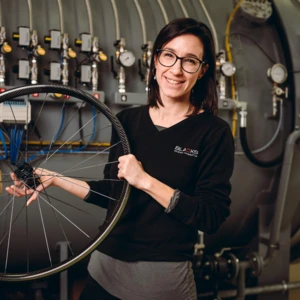
„When we tested the curing degree by DSC the same way we did for the previous two bike rims, we realized that the kinetics-optimized curing cycle not only allowed us to almost halve the production time, but also to further improve the curing degree. A real happy ending.“
Dr. Chiara Leonardi, R&D Manager at Blacks, explains:
“Our collaboration with NETZSCH Analyzing & Testing started when we decided to expand our process control by setting up a laboratory equipped with a Differential Scanning Calorimeter (DSC) and a Thermogravimetric Analyzer (TGA) by NETZSCH, which allow us to control both prepregs and cured products.
We chose NETZSCH because of the extensive experience and dedicated focus on the composites industry. The complexities of composite materials require specialized knowledge and tailored solutions, and NETZSCH has consistently demonstrated their expertise in this sector.
Beyond the quality of their instruments, we stand out for NETZSCH’s exceptional customer care: the journey from instrument selection to post-purchase support is seamless, thanks to their responsive and knowledgeable customer care team. Timely assistance, troubleshooting guidance, and ongoing support have proven invaluable, reinforcing the partnership between Blacks and NETZSCH.”
Challenge accepted:
Production of a Carbon Bike Rim
“Our daily need is to run routine measurements on incoming raw materials, the aging of prepregs, glass transitions, fiber content, and the cure degree of our final products, just to mention some examples,” says Dr. Leonardi.
As they were requested to produce a carbon bike rim, Blacks decided to face a new challenge that involved the use of thermal analysis and the support of NETZSCH applications specialists.
The targeted curing degree for this bike rim was set at 95%, to ensure both the mechanical and thermal performance levels requested by the customer. This value was defined after initial characterization of the selected prepreg performed by Blacks' thermal analysis laboratory.
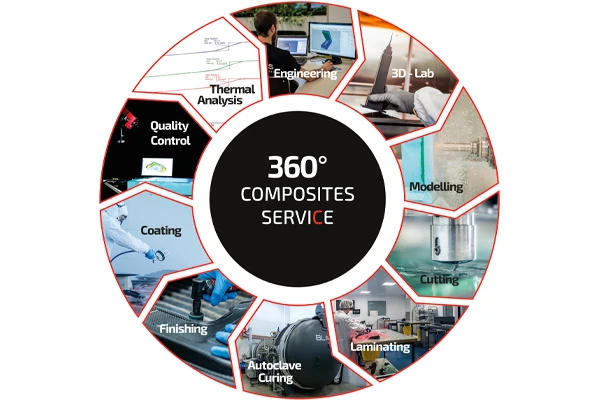
When the production phase started, it was clear to Blacks that they needed to find a thermal cycle suited for achieving two main targets: reaching the curing target preset and shortening process times.
“Our approach is to apply, first of all, the curing cycle suggested in the technical data sheet of the prepreg. And this was the case for the autoclave consolidation of the first prototype rim, the ‘SN1’. However, this first production showed the need for post-curing to achieve the desired crosslinking level,” explains Dr. Leonardi.
To qualify the achieved degree of cure level, DSC measurements were performed using the DSC 214 Polyma on both the uncured resin (prepreg) to evaluate the total curing enthalpy of this material (Htot), and – under the same conditions – on an SN1 sample to measure the residual cure (Hres).
Figure 1 shows the DSC curves and the evaluated ExotérmicoA sample transition or a reaction is exothermic if heat is generated.exothermal curing signals for the two measurements.
The degree of cure (α) was calculated with the following equation:
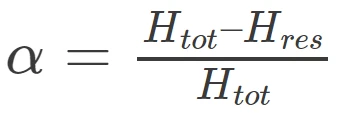
For SN1, the α value resulted to be 94.5%, hence lower than the targeted one.
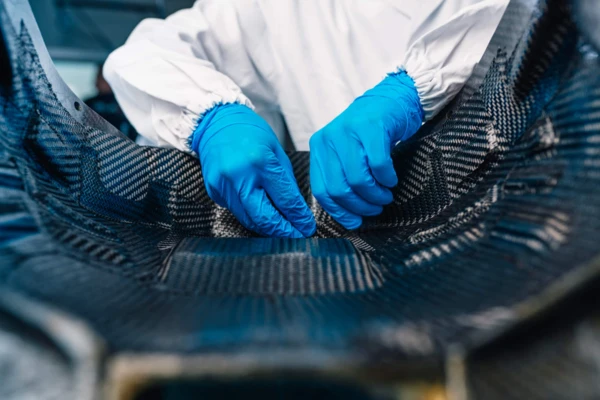

How to Reach the Targeted Curing Degree?
In the absence of any other useful information, the classic method considers whether to either increase the maximum temperature or to extend the time of the isothermal segment.
This trial-and-error approach, however, is time-consuming; it also requires long autoclave downtimes and high raw material consumption. Moreover, it is not always exploitable: For instance, the maximum temperature choice is limited by the Reação de DecomposiçãoA decomposition reaction is a thermally induced reaction of a chemical compound forming solid and/or gaseous products. decomposition temperature of the resin itself.
That’s where NETZSCH know-how came into play.
“We decided to produce a second prototype rim by applying a curing cycle similar to the first one, but with a prolonged stasis. Though this cycle hit the targeted curing degree, the resulting total cycle time of 8 hours was too long for our production capabilities,” continues Dr. Leonardi. “Therefore, we asked NETZSCH to help us find a new and faster thermal profile. We performed some new DSC measurements on the prepreg and we passed the data to NETZSCH, who did magic with its Kinetics Neo software.”
To perform kinetic studies, at least three different heating ramps or three different isothermal temperatures are normally mandatory for a complete thermal analysis measurement.
In this case, Blacks decided to apply dynamic ramps at rates of 1, 2, 5 and 10 K/min. The resulting evaluated thermograms are depicted in Figure 2.
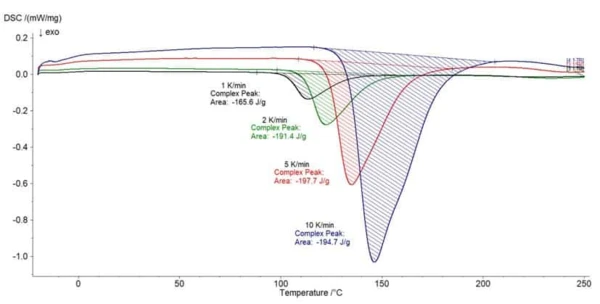
Performing Kinetic Studies and Prediction of the Material Behavior
To predict the curing behavior for different process scenarios, the DSC data measured at the four different heating ramps were uploaded into the NETZSCH Kinetics Neo software.
Figure 3 shows the conversion fit as a result of applying the model-free approach, chosen from among those available in the software: This is a new mathematic technique called “Numerical Optimization”, designed by NETZSCH to support users without experience in kinetic simulation and in industry in general, where time-consuming evaluations are often not compatible with production needs.
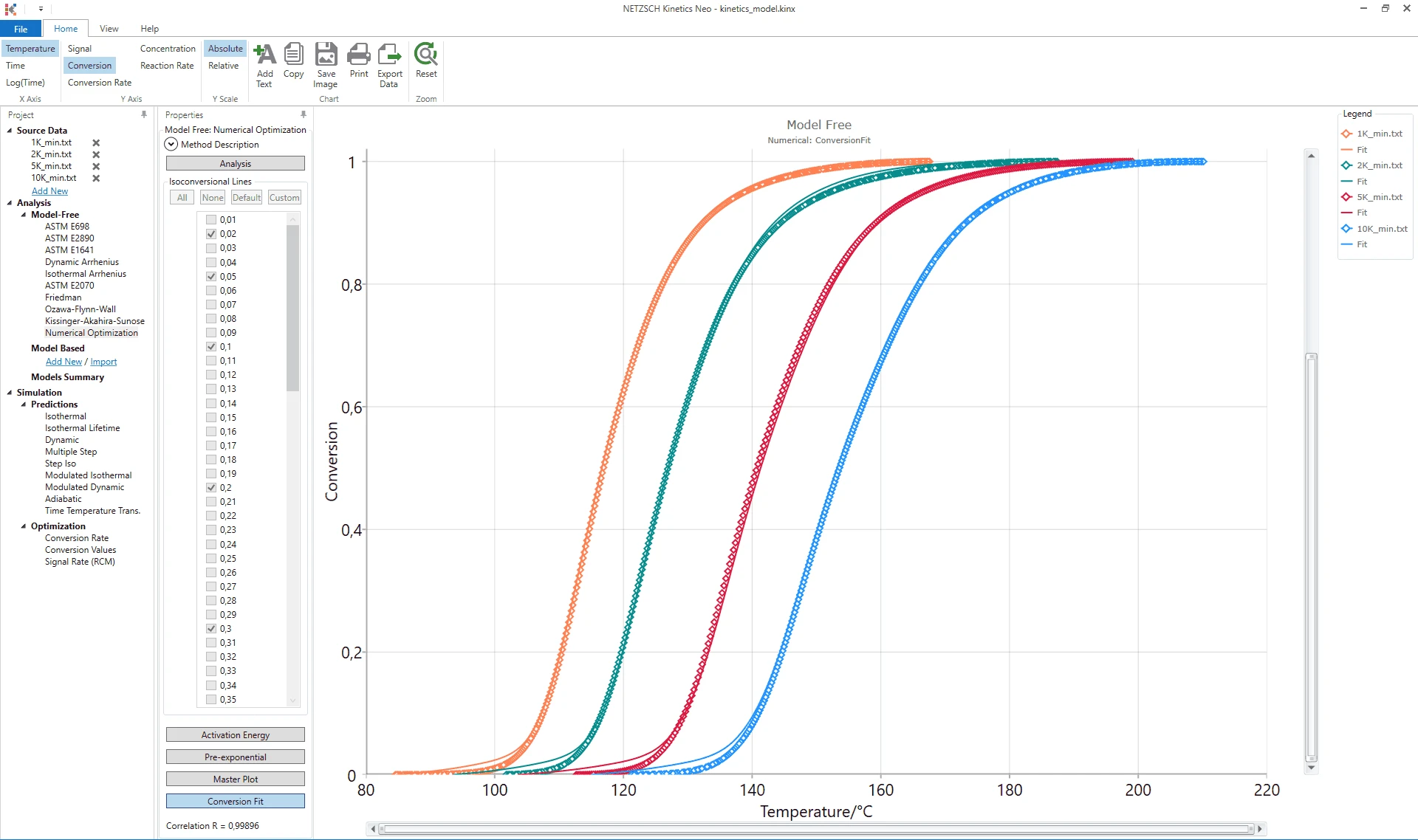
Moreover, to avoid overheating and hence material damage, the maximum reaction rate was limited in the software, to ensure that its value never exceeded the one measured for the curing cycle used to produce the SN2 prototype.
The total time for the newly designed curing cycle turned out to be 260 minutes; compared to the 480 minutes of the previous one, this sounded really promising for time saving in production.
But what about the targeted curing degree?
Shorter Time, Better Curing Efficiency
Blacks relied on the newly optimized curing cycle and decided to apply it to manufacture a third prototype (SN3).
“When we tested the curing degree by DSC the same way we did for the previous two bike rims, we realized that the kinetics-optimized curing cycle not only allowed us to almost halve the production time, but also to further improve the curing degree. A real happy ending,” concludes Dr. Leonardi.
Indeed, the autoclave manufacturing cycle of the CFRP bike rim by Blacks S.r.l. was reduced by 46% in time as compared to the previous cycle, which had achieved the desired curing target; furthermore, it even exceeded the targeted degree of cure (with a result of 96.1%) and avoided overheating at the same time.
Table 1 shows the comparison of all relevant data for the production of each bike rim at a glance.
This case study clearly demonstrates how production cycles can be optimized with a combined DSC-Kinetics approach. Compared to trial-and-error manufacturing, material characterization and simulation is much more efficient and requires just a few milligrams of resin, thus bringing big cost savings to the composite industry in terms of both raw materials and production time.
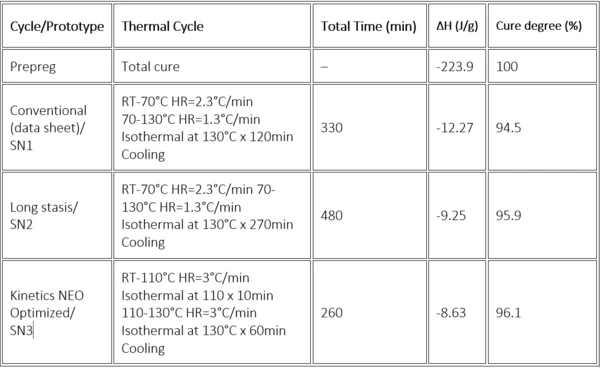
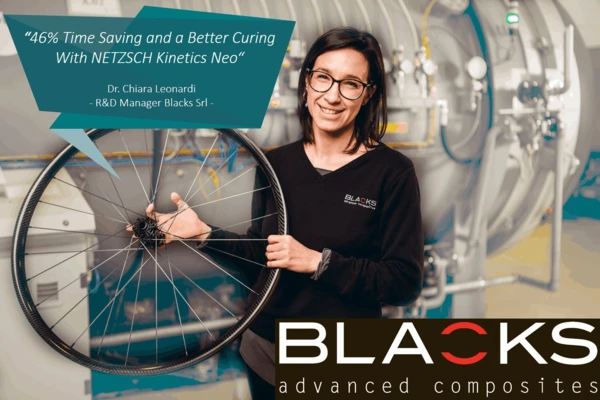
Acknowledgments
The collaboration between Blacks S.r.l. and NETZSCH has been active for years and has expanded to other areas. Dr. Chiara Leonardi has often been our guest speaker at conferences, seminars and webinars.
Furthermore, Blacks is continuously growing. Currently, they are in the process of doubling their factories. The new production site, also located in Faenza, will allow a significant increase in Blacks’ operational and R&D capacity, by hosting up to 150 workers, modern autoclaves, equipment and tools.
This growth reaffirmed their continuing commitment to the pursuit of excellence and innovation.
It really seems that Blacks shares our Proven Excellence vision!
We congratulate our customer on their future perspectives, and once again thank Dr. Chiara Leonardi for the support, while looking forward to facing new challenges together.
